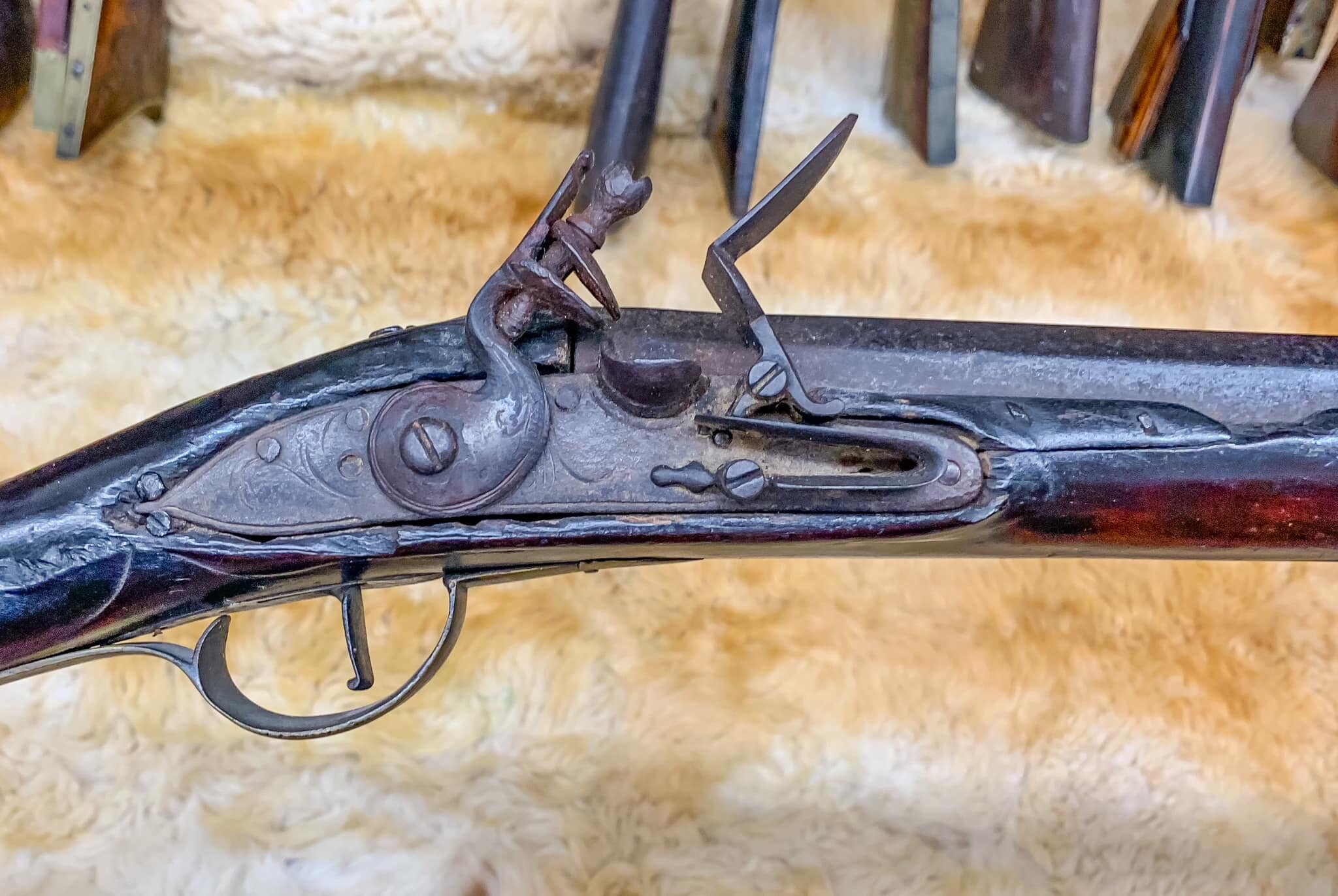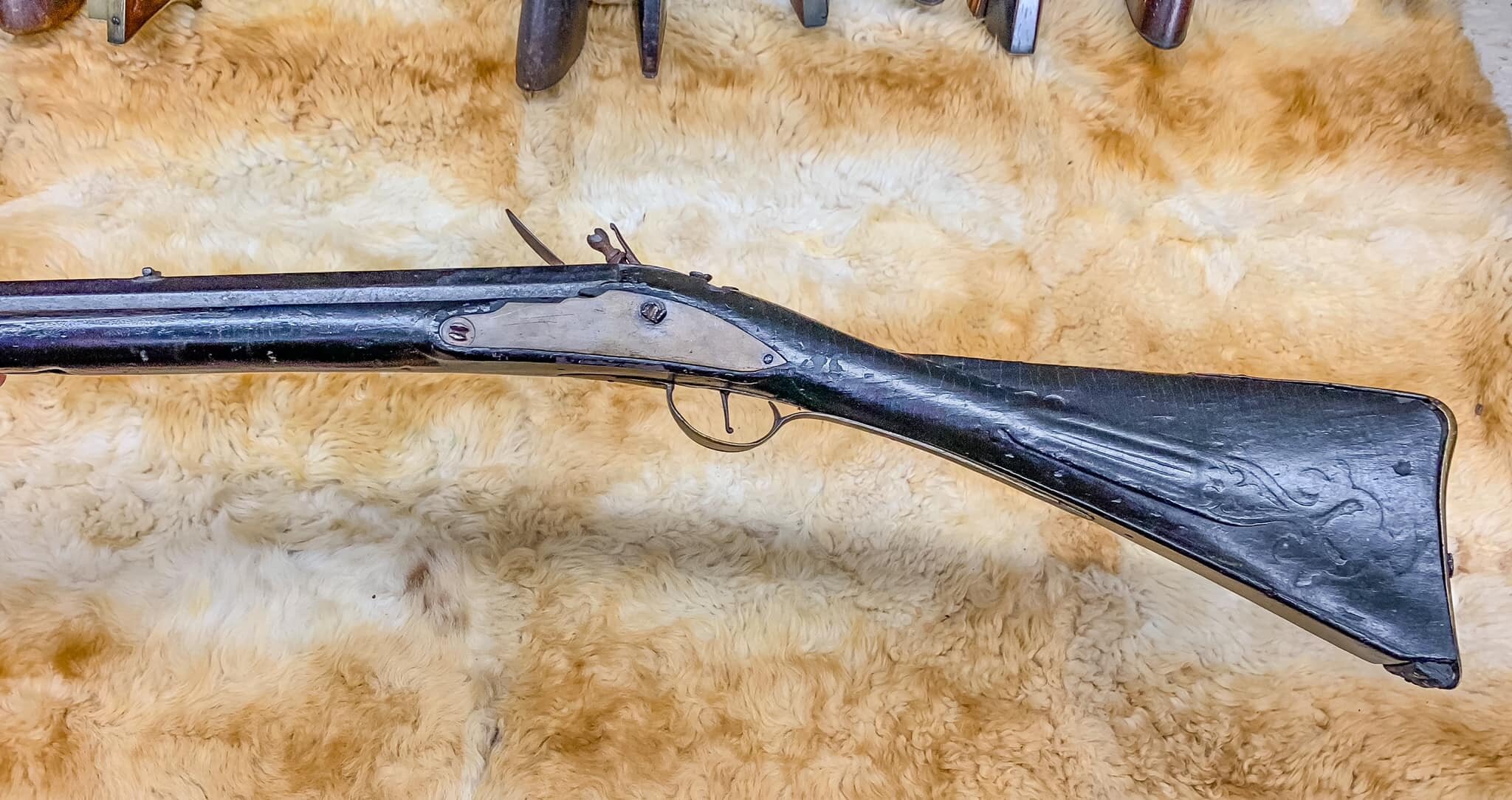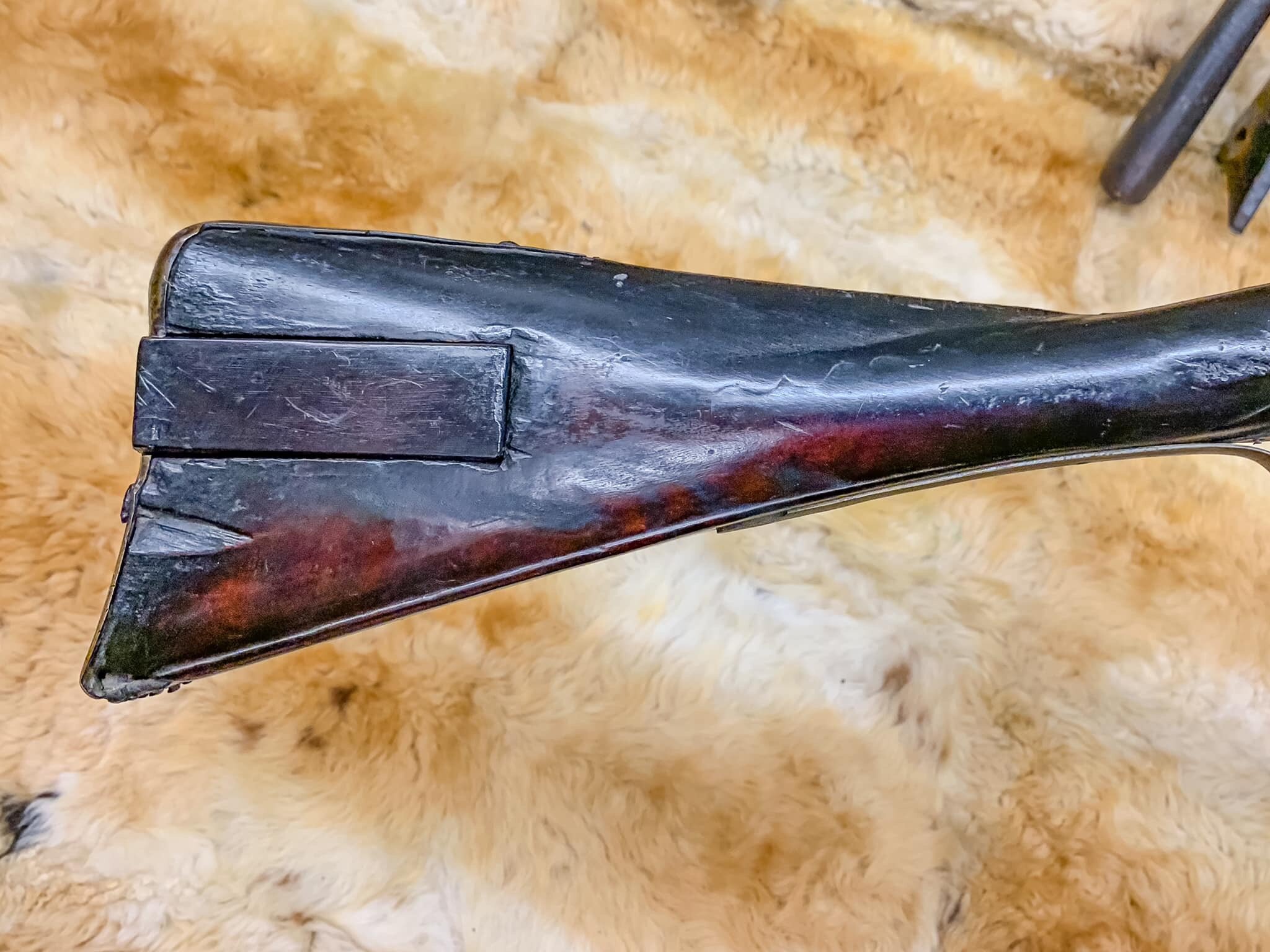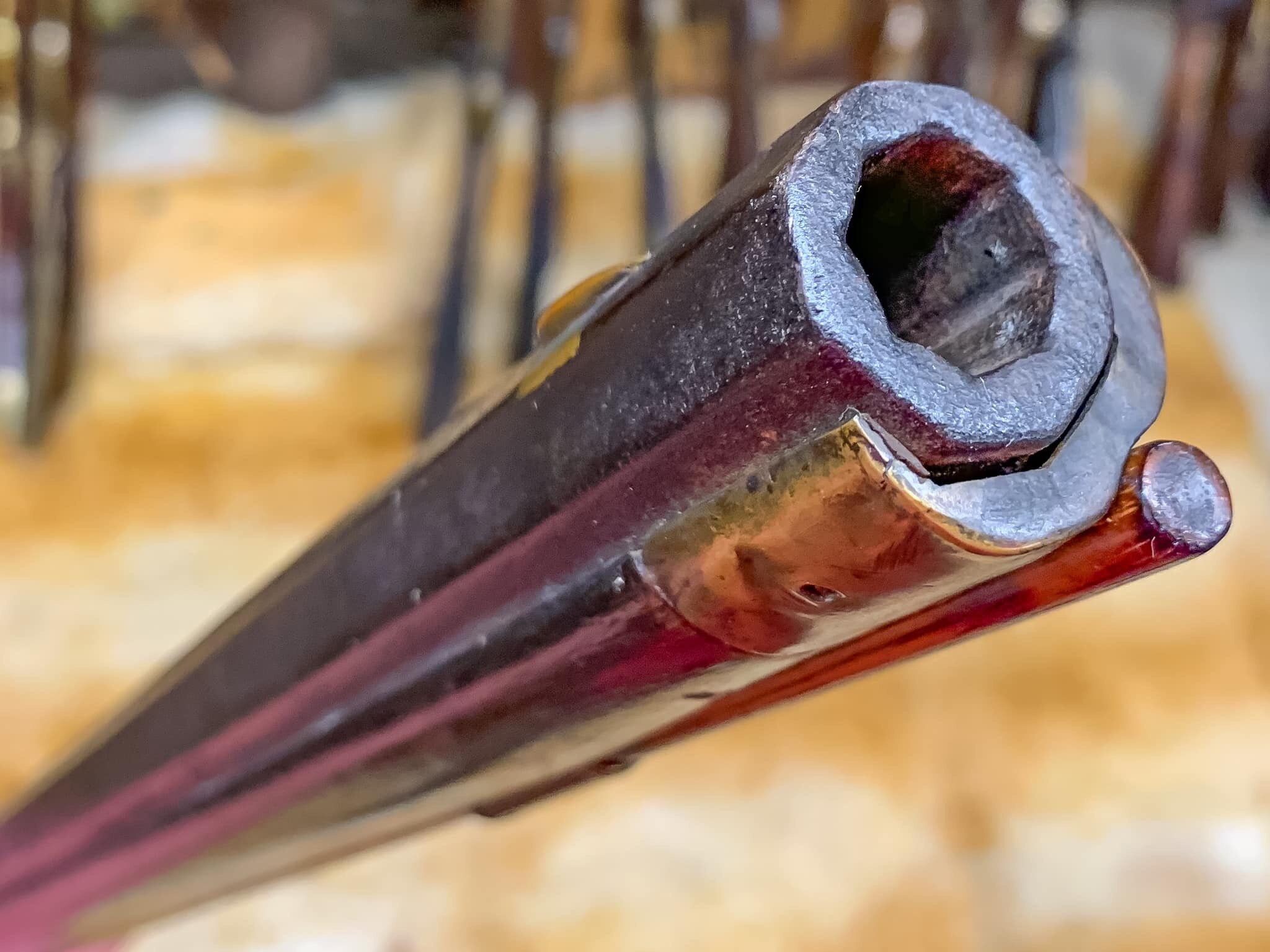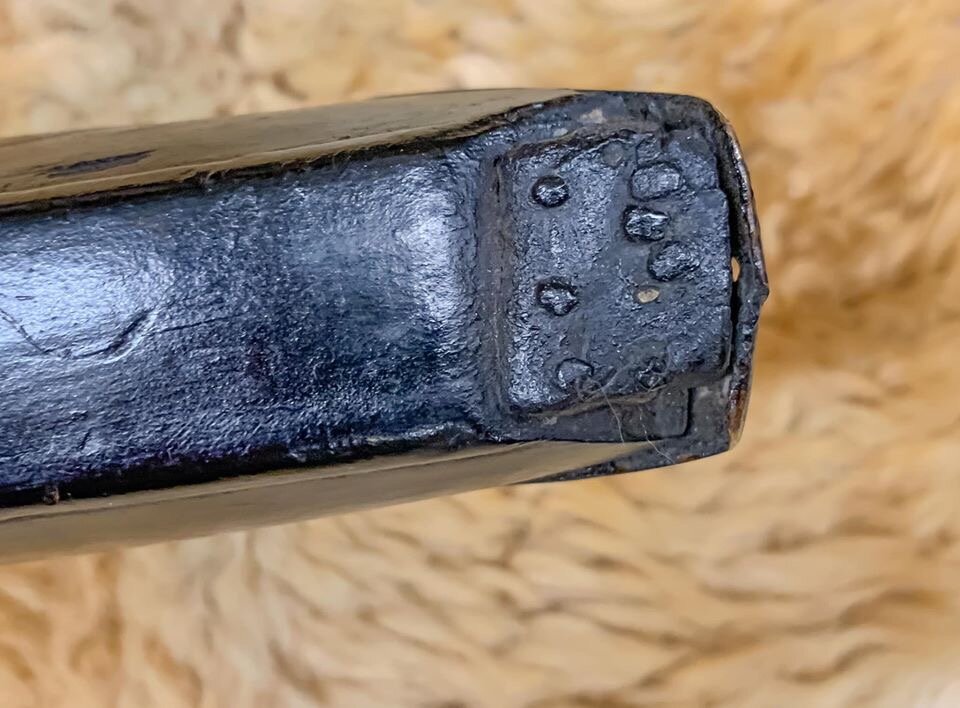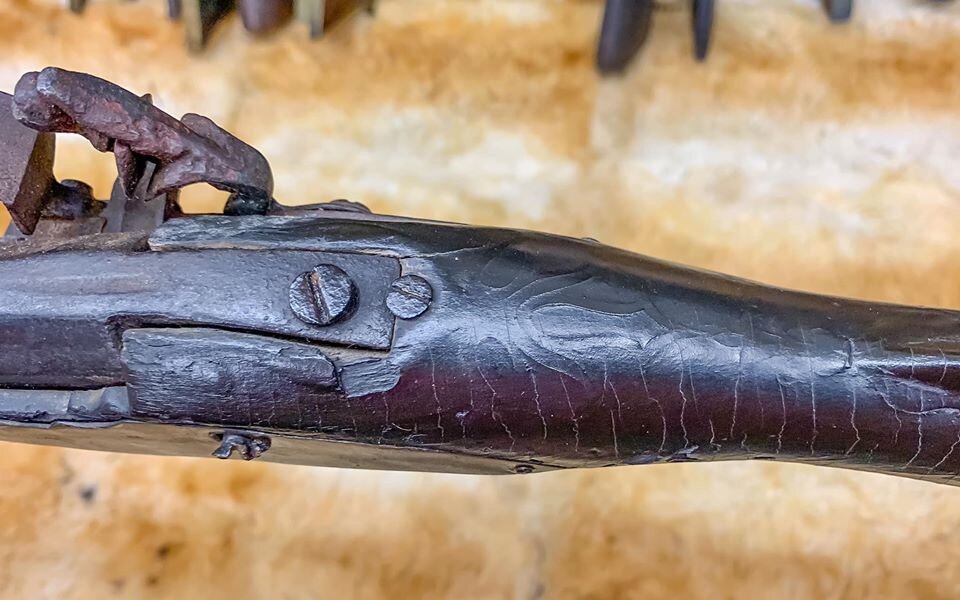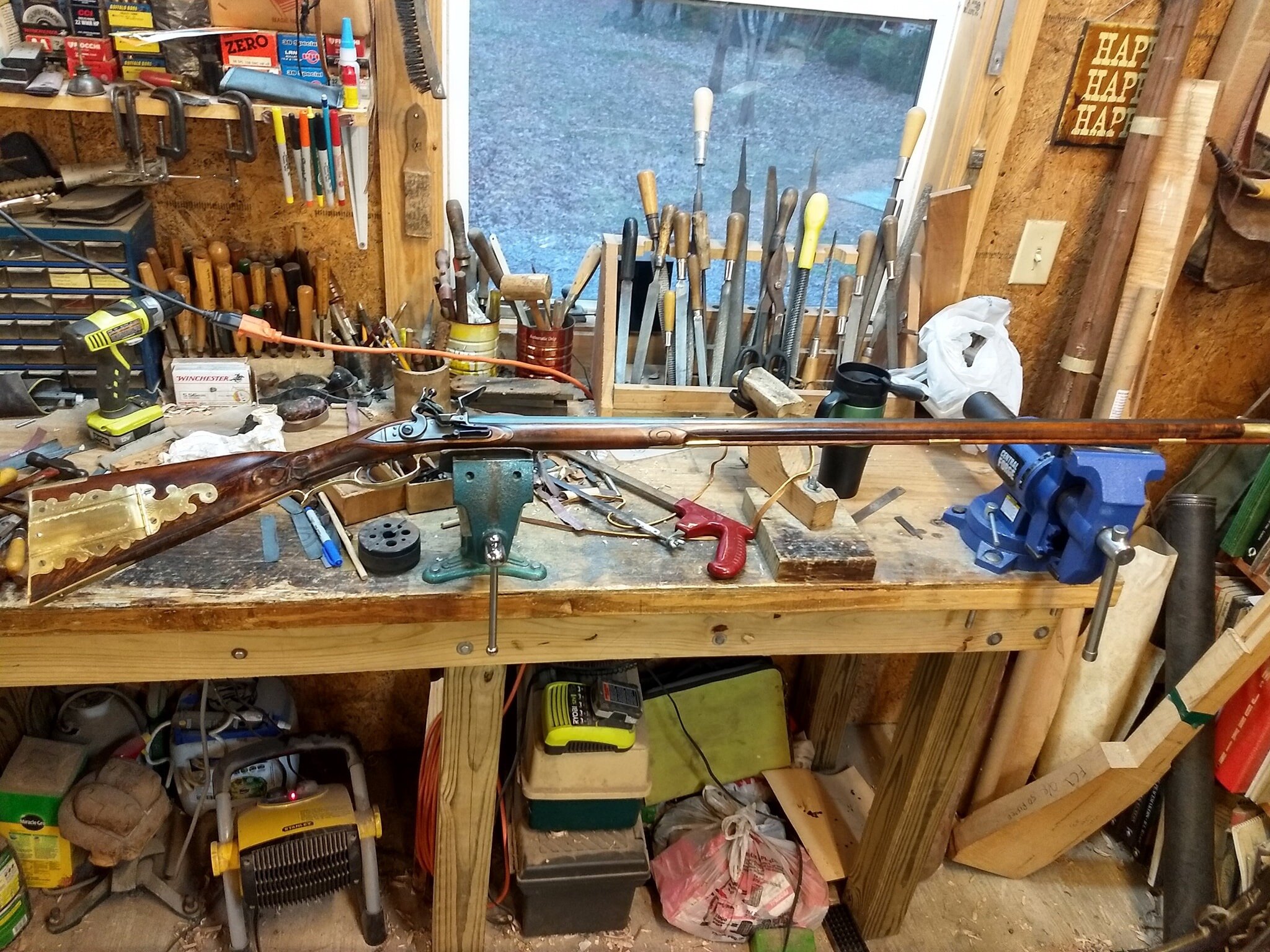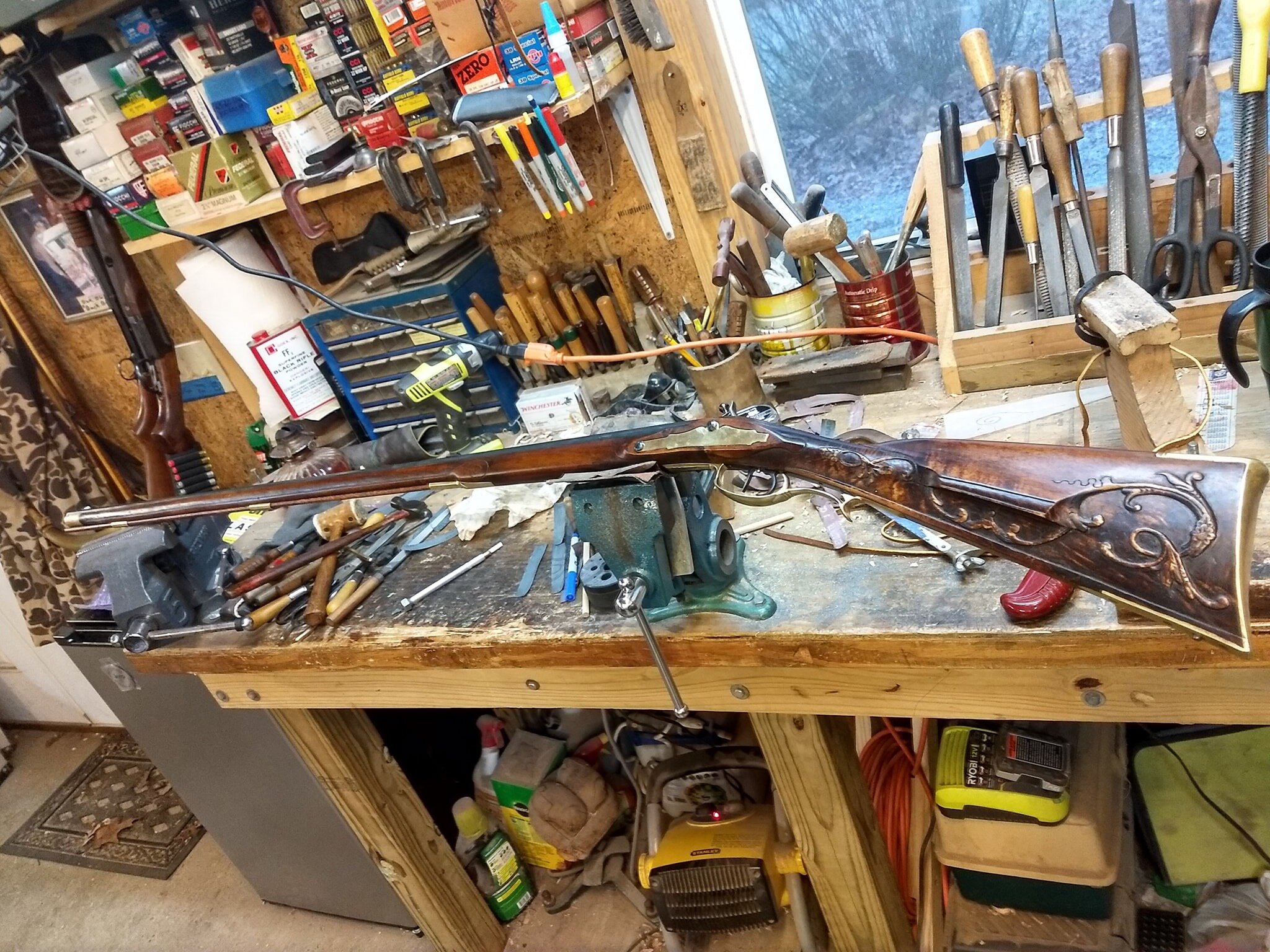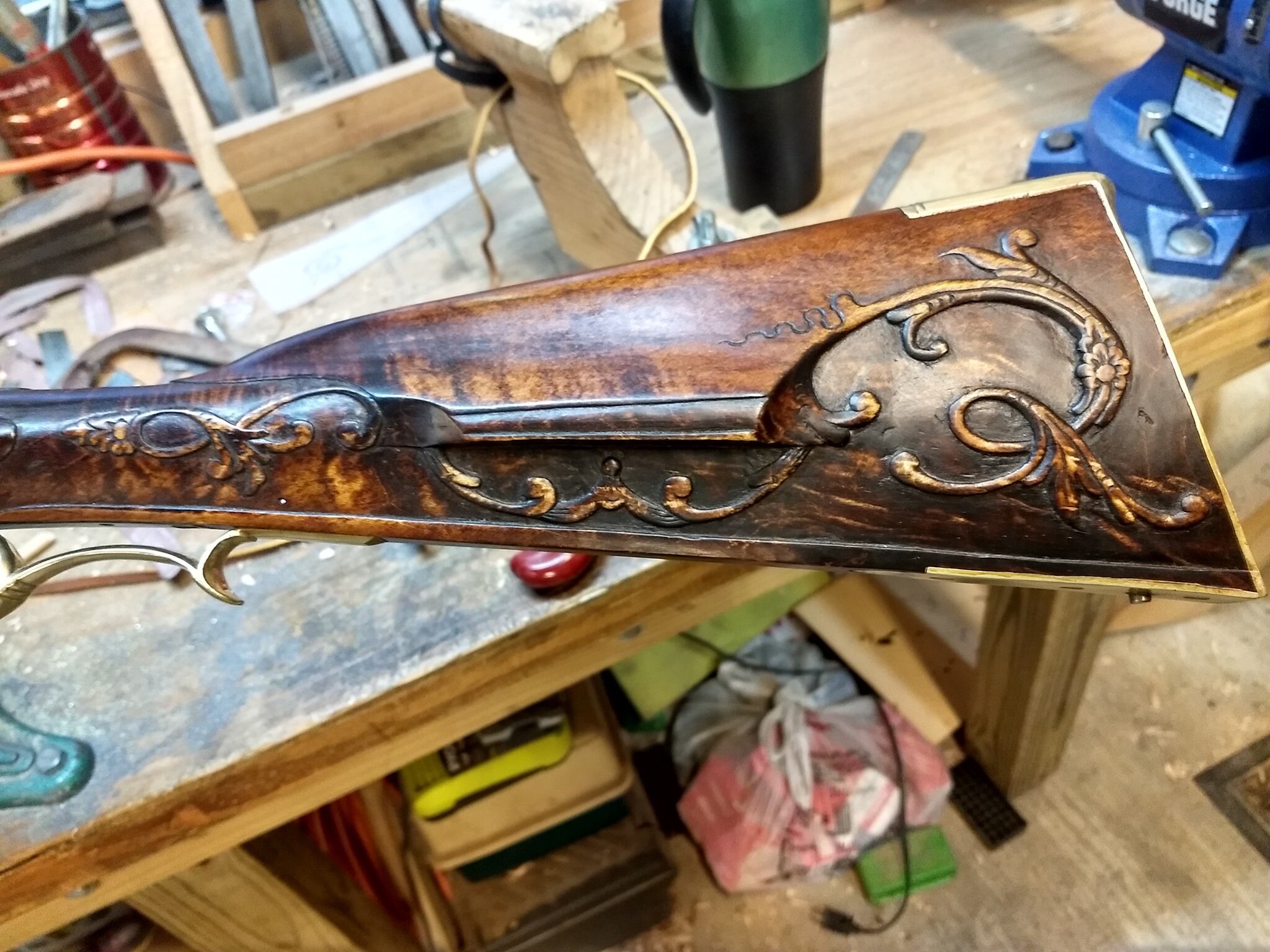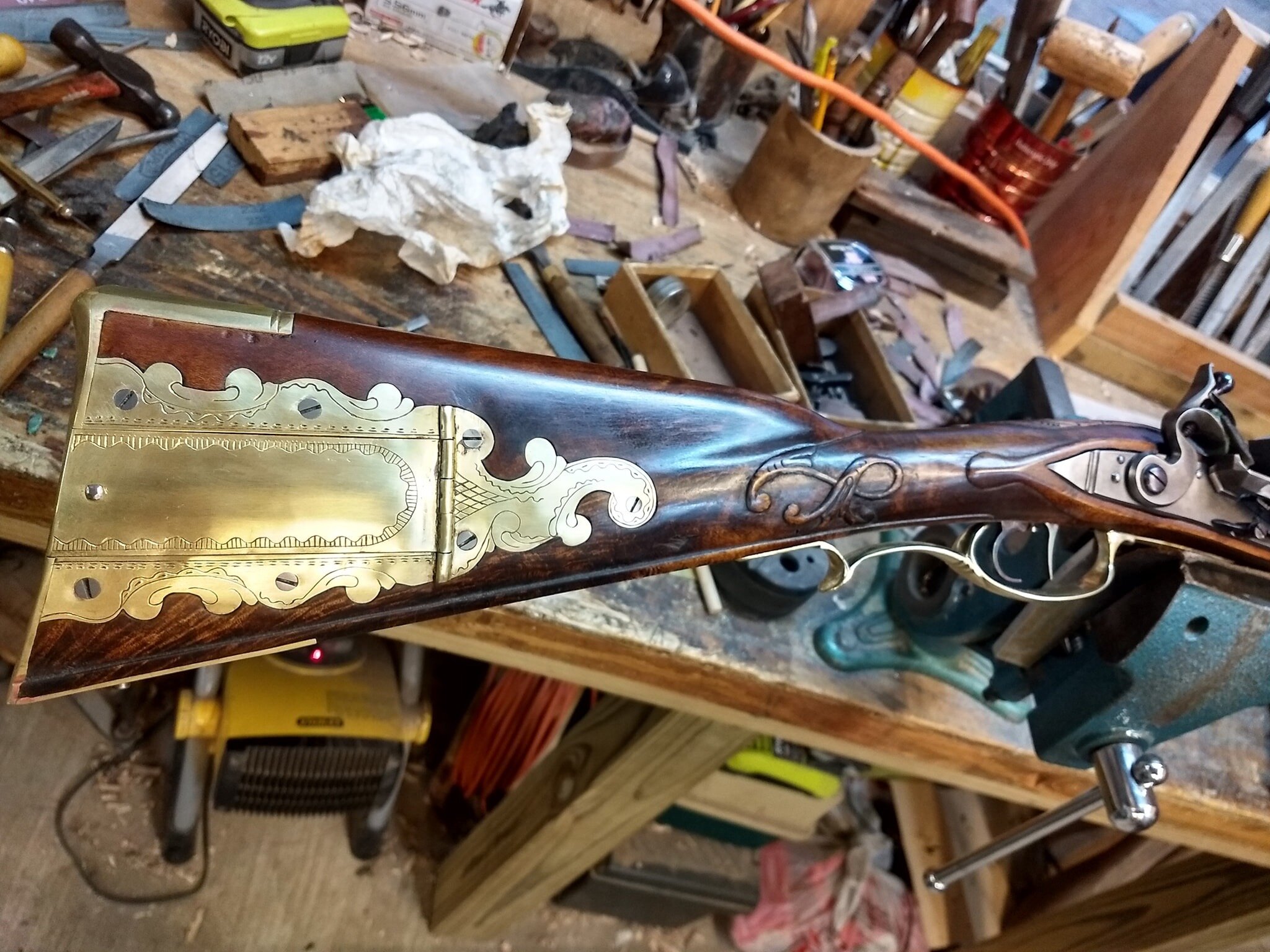Longrifle made in Augusta County, Virginia Circa 1750s. This is a quintessential Virginia frontier workhorse rifle, which likely saw more than a century of service. At .62 caliber, it has an extremely large bore for a rifle. It is a rare example of a French and Indian War era rifle, in a conflict and time mostly comprised of smoothbore guns.
This is a very early relief carved longrifle attributed to Augusta County, Virginia School of longrifle gunsmiths. Possibly made by John Hannah, Augusta County Gunsmith or from the Augusta County Gun Factory in Staunton, VA. It is very possible that it was made by John Hannah. John was among the earliest gunsmiths known to have worked in Augusta County, Virginia. Prior to 1739, the Hannah family settled in Augusta County on land southwest of Staunton, Virginia on Colliers Creek (Colliers Creek lies southwest of Lexington, VA in present day Rockbridge County).
They settled on land acquired from Benjamin Borden who had been the recipient of the Borden Land Grant in 1738. In 1754, John Hannah agreed to teach his indentured servant, John Mitchell, the art of a blacksmith and gunsmith. In 1768, John built a mill on Colliers Creek.Based on his inventory of tools recorded after his death in 1782, he was a blacksmith, white-smith, silversmith, and gunsmith. Early southern wooden patchbox longrifles attributed to a Virginia maker are rare.
This longrifle was owned for many years by George Shumway. There is wonderful early carving on the check piece and the longrifle retains a period patchbox lid which may be the original patch box cover. The check side of this longrifle was subjected to heat from a fire in George Shumway’s home. The damage to the wood was minimal and the wood was sucessfully stabilized after the fire.
The lock was converted to flint by Alan Guthchess (Curator at Fort Pitt). Alan commented that this was his favorite “frontier longrifle”. This longrifle was on display at Fort Pitt in their renowned French and Indian War display, “Captured by Indians” in 2015 – 2016, along with the original spike tomahawk I posted yesterday.






